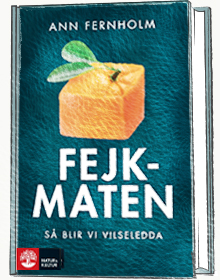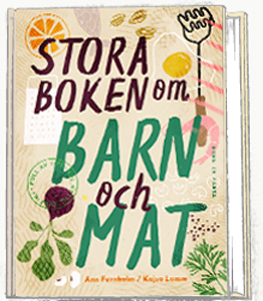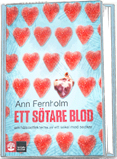Enligt Svenska Dagbladet har forskare nu visat att ägg är bra för blodfetterna – de höjer inte kolesterolnivåerna på något farligt vis. När jag skrev Ett sötare blod gjorde jag en grundlig genomgång av hur hela kolesteroltesen föddes. En sak som förvånad mig var att Ancel Keys – kolesteroltestens fader – tidigt konstaterade att det inte går att höja kolesterolnivåerna i blodet genom att äta kolesterolrik föda som ägg. I en publikation från 1950-talet skriver han (se originalcitatet nedan) att kolesterol i maten visserligen ökar kolesterolnivåerna i blodet hos till exempel kaniner och kycklingar. Men när man gör liknande försök på hundar, apor och människor, som har en helt annan omsättning av kolesterol, får man inte alls samma effekt. Levern bildar cirka 10-20 gånger mer kolesterol än vad en person får i sig om hon eller han äter naturlig föda. Studier visar också, skriver Ancel Keys, att det inte finns någon koppling mellan mängden kolesterol i den föda en person äter och mängden kolesterol i blodet.
Sedan jag läste detta har jag undrat varifrån rådet om att vi skulle äta färre ägg kom. Vem kom på att ägg är farligt för hjärtat? Inte ens Ancel Keys tror ju på detta. När jag skrev boken var jag tvungen att sålla bland frågeställningarna och detta är en av de frågor jag aldrig sökte svaret på. Men jag undrar – är det någon av alla kunniga läsare av denna blogg som vet? Vad grundade man varningarna om ägg på? Eftersom ägg är bland det mest vitaminrika vi kan äta, är det dumt att akta sig för dem i onödan.
Citat av Ancel Keys kring kolesterol:
Så är skriver Ancel Keys 1953 i The Amercian Journal of Public Health:
”As will be seen, the cholesterol level in the blood (and the level of the related lipoproteins) can be influenced by the diet, both in man and in some animal species. However, the situation has been greatly confused by too much reliance on experiments with animal species differing from man in cholesterol metabolism. Adding equal amounts of cholesterol itself to the diet produces widely different results in the several species studied so far, the rabbit and the chicken being at one extreme, while man, the dog, and probably the monkey are at another and opposite extreme. Atherosclerosis may be readily produced in the rabbit and in the chicken by feeding a diet containing large amounts of added cholesterol. There is no doubt that the resulting arterial deposits of cholesterol are directly related to the concentration of cholesterol in the blood which rises to great heights in these species, while feeding cholesterol to man, or to the monkey, has very little effect on the blood even when enormous doses of cholesterol are given.
The cholesterol-fortified diet commonly used to produce hypercholesterolemia and subsequent atherosclerosis in the rabbit contains 1-5 per cent of added cholesterol. A 2 per cent cholesterol diet for the rabbit, which is most commonly used, corresponds to about 15 gm. of cholesterol in a 3,000-calorie diet for a man. Such an amount of cholesterol is fantastically far above anything that occurs in any natural human diet, the upper limit of the latter being of the order of 1 gm. in 3,000 calories. Even when concentrating on foods of naturally very high cholesterol content, it is difficult to devise a regular diet to provide, experimentally, as much as 2 gm. of cholesterol in the daily diet. That dietary cholesterol is not important for man would be predicted from the fact that the biliary output of cholesterol from the human liver is from 10 to 20 times as much as the daily amount of cholesterol in any diet of natural foods. Repeated careful dietary surveys on large numbers of persons in whom blood cholesterol was measured consistently fail to disclose a relationship between the cholesterol in the diet and in the serum.”
Vill du läsa fler liknande inlägg? Titta i kategorin Okategoriserade, Tankar kring fettdebatten. Stötta mitt arbete via Patreon.







KickAnn ∙ 17 december, 2012 kl. 11:21
Jaså självaste Ancel Keys förstod detta, desto mer häpnadsväckande att begränsa intaget av ägg som du säger…
Kan det vara som vanligt, att upptäckter som en dag är en sanning, nästa dag glöms bort lika fort? Det har vi tyvärr sett alltför många gånger i kostsammanhang.
Tror att Kostdoktorn beskrev detta med ungefär dessa ordalag: Media har minne som en guldfisk när det gäller studier och dess resultat. Dagen efter glöms de bort och man startar på noll i kunskapsläge igen 🙁
≪ | ≫ |
P ∙ 17 december, 2012 kl. 12:45
Kolesterol hejdar celldöd – har det betydelse för cancer?
http://www.mynewsdesk.com/se/pressroom/linkopings_universitet/pressrelease/view/kolesterol-hejdar-celldoed-har-det-betydelse-foer-cancer-822709
≪ | ≫ |
Lennart ∙ 17 december, 2012 kl. 16:31
Hej,
jag minns att detta med ägg och kolesterol dök upp i media i mitten på 70-talet. Misstänker starkt att kolesterolet i ägg är det samma som mättade fettet, ”Guilt by association”.
I början på 70-talet kom det också ett larm från forskare om att margarin var hälsofarlig, men det försvann snabbt 🙂
≪ | ≫ |
Thomas H ∙ 17 december, 2012 kl. 20:26
Du har nog rätt där,Lennart. Jämför även med du blir fet av fett och kaloritänket.
På ett sätt ”skrivbordslösningar”. Även lite märkligt för några (många?) borde ju känt till verkliga fakta och reagerat långt tidigare.
Kolesterolskräcken kan nog jämföras med den som skapades inför svininfluensavaccinationen nu senast.
Det där margarinlarmet styrdes nog bara bort och gömdes undan.
≪ | ≫ |
Bernt Östlund ∙ 17 december, 2012 kl. 20:31
Lite lustigt att SvD skriver om ett ägg till frukost men i studien handlade det om tre ägg. Man för intrycket av att man tycker tre ägg är för mycket så man nöjer sig med ett ägg.
Min frukost är nog ofta två stekta ägg och bacon till det men det kan ju ingå ägg i maten i övrigt också.
≪ | ≫ |
Thomas Tombola Jansson ∙ 18 december, 2012 kl. 12:07
Ställ frågan till Uffe Ravnskog, om inte han vet var ”äggskräcken” kommer ifrån så blir det nog svårt att få fram ett svar,,,,
≪ | ≫ |
DN debatt: ”Dags att momsbefria mat som är bra för folkhälsan” | Ett sötare blod ∙ 4 februari, 2014 kl. 08:21
[…] och grädde är farligt. Tvärt om visar studier exempelvis att ägg är bra för blodfetterna: Vem kom på att ägg är farligt för hjärtat?. Dessutom är ägg bland det mest vitaminrika vi kan äta. Varningar om rött kött baserar sig […]
≪ | ≫ |